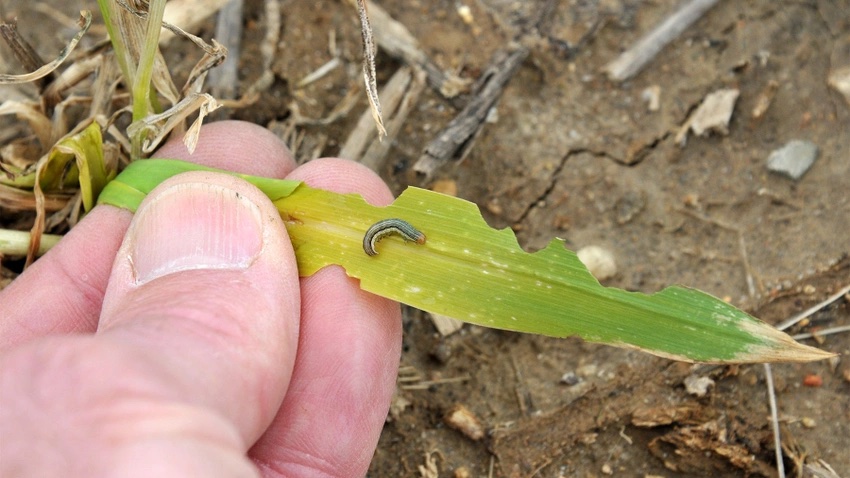Rethink insect control for corn after cover crops

We seeded more cover crop acres. Should we prepare for more insect pressure? Which insects should we worry about most? Should we only go with Bt corn after cover crops?
The Indiana certified crop advisers panel answering this question includes Steve Gauck, regional agronomy manager for Beck’s, Greensburg; Bryan Overstreet, Conservation Cropping Systems Initiative agronomist, Valparaiso; Dan Quinn, Purdue Extension corn specialist; and Dan Ritter, central region agronomist, Dairyland Seed.
Gauck: Insect pressure in cover crops can be variable, sometimes based on when you terminate it. If you terminate early, insect pressure can be lower due to no host plants available for insects. If you plant green and wait to terminate, insects have other host plants to feed on. Terminating close to planting is when you could be at higher risk. When scouting to spray burndown, evaluate insect pressure and determine if you need to add an insecticide with the burndown pass.
Early-season insects you should scout for are cutworm and armyworm. Purdue keeps track of these moth flights and can help you determine if moth pressure is high. There is no advantage to plant a Bt corn following cover crops because insects targeted by Bt corn are not using the cover crop for a host plant.
Overstreet: Depending on the cover crop and timing of termination, there can be an increase in cutworms and armyworms. Both insects are attracted by growing green plants as they fly in from the south. They land in those crops and lay their eggs. If timing is right, corn may be just coming up when eggs hatch. The cover crop is dead, but the corn plant is there to feed on. There was inconsistent control of cutworms and armyworms in the spring. Check with your seed dealer to make sure the version of Bt you have in your package will cover those insects.
Quinn: Insect populations can increase with the use of cover crops, but this will likely be determined by the cover crop species and when the cover crop is terminated. Potential insect pests to monitor include armyworms, black cutworms, seed corn maggots, wireworms and stinkbugs. In addition, slugs can be a challenge in cover crop fields.
It would be worth terminating the cover crop at least two weeks prior to planting to help manage additional insect pressures. In addition, it would be worth using Bt corn after cover crops as additional protection against insect pests in cover crops.
Ritter: Prepare for more insect pressure in corn after cover crop seeding. There now exists more habitat for crop-damaging pests. Watch for black cutworms, armyworms, slugs, seed corn maggots and white grubs. Black cutworms, for example, lay eggs in the green cover crop in the spring.
Insects in the Lepidopteran species can be controlled or suppressed by Bt. Planting a Bt product may be a good choice, especially because they would assist in holding the detrimental insect feeding while having limited impact on desired species. Once the cover crop system gets in full cycle, you may get more beneficial insects to move in that could help balance out some detrimental ones.

